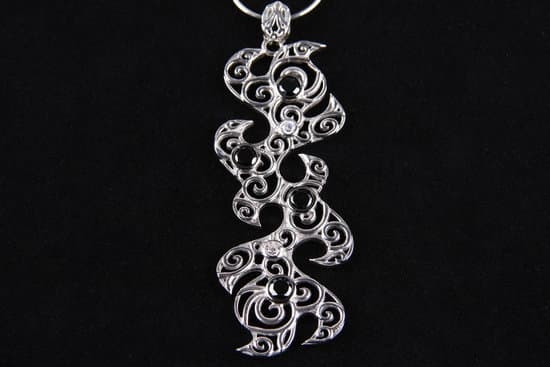Zuni inlay jewelry is a true testament to the artistry and craftsmanship of the Zuni people. For centuries, this unique style of jewelry has captivated individuals with its intricate designs and stunning use of gemstones. The history of Zuni inlay jewelry dates back to ancient times when it was first developed by these skilled artisans. Today, it continues to be revered for its timeless beauty and cultural significance.
Zuni inlay jewelry is rooted in the ancient traditions and customs of the Zuni people, who have inhabited what is now New Mexico for thousands of years. The art form emerged as a way for Zuni artists to express their deep connection to nature and their spirituality. By embedding various gemstones into their designs, the artists sought to capture the essence and energy of the natural world.
Throughout the centuries, Zuni inlay jewelry has evolved alongside the changing cultural landscape of the Zuni people. As different materials became available, such as silver obtained through trade with Europeans, artists began incorporating these into their creations. At times, specific motifs emerged as trends within the art form, while other periods saw experimentation with new techniques.
The rich history of Zuni inlay jewelry encompasses both artistic expression and cultural symbolism. Each piece carries with it layers of meaning that reflect the spiritual beliefs and values of the Zuni people. From depictions of animals to elements inspired by nature, these symbols are deeply rooted in traditional stories and ceremonies.
As we delve further into this article, we will explore not only the origins and evolution of Zuni inlay jewelry but also its meticulous craftsmanship, cultural significance, choice materials used by artisans from diverse regions across time (eg., different types stones or types of stones carving), as well as tips for collectors interested in preserving this rich tradition.
Stay tuned to discover how this unique form of adornment has not only shaped contemporary fashion trends but also left an indelible mark on both Native American culture and the global jewelry industry.
Unearthing the Origins
Zuni Inlay Jewelry has a rich and ancient history that dates back centuries. The art form can trace its origins to the ancestral Pueblo people who inhabited the Southwest region of the United States, specifically in what is now known as Zuni Pueblo in New Mexico. The Zuni people have a deep connection to their land and their cultural heritage, which is reflected in their exquisite jewelry pieces.
The Pueblo people have been known for their expert craftsmanship and artistic abilities for thousands of years. Archaeological evidence suggests that they have been creating intricately designed jewelry using various materials as early as 600 CE. However, it was during the 19th century that the art of inlay work truly flourished among the Zuni people.
During this time, Zuni artisans began incorporating silver into their jewelry-making techniques, which transformed their traditional jewelry into magnificent works of art. These skilled craftsmen were able to combine intricate stone cutting and silverwork to create stunning pieces that showcased both their artistic vision and technical expertise.
One distinctive feature of Zuni Inlay Jewelry is its use of vibrant gemstones and shells. The Zuni people believed that each stone possessed unique spiritual properties and powers, making them central to their religious ceremonies and practices. This belief system is deeply rooted in their culture and continues to influence contemporary Zuni artisans today.
As we delve deeper into the history of Zuni Inlay Jewelry, it becomes evident that its ancient roots are firmly embedded in the traditions and customs of the Zuni people. By understanding its origins, we can better appreciate how this art form has evolved over time while still maintaining its cultural significance.
The Legacy of Zuni Artistry
Zuni Inlay Jewelry is not just a form of adornment; it is a testament to the rich history and artistic heritage of the Zuni people. This section will delve into the evolution of Zuni Inlay Jewelry over the centuries, highlighting the key changes in style, techniques, and designs that have occurred throughout its history.
The Early Years: Primitive Beginnings
The origins of Zuni Inlay Jewelry can be traced back thousands of years to the Ancestral Puebloans, who inhabited what is now known as the American Southwest. These early craftsmen laid the foundation for what would later become Zuni Inlay Jewelry. They utilized intricate stone mosaics and shell designs to create stunning pieces that were worn for ceremonial purposes.
The Spanish Influence: Introducing Metalwork
In the 16th century, Spanish colonizers arrived in the Southwest and introduced metalworking techniques to the indigenous tribes. This had a profound impact on Zuni Inlay Jewelry, as silversmithing became incorporated into their traditional practices. The addition of silver allowed for new possibilities in design and craftsmanship, with intricate patterns and detailed settings becoming more prevalent.
The Rise of Cluster Style: A Distinctive Zuni Innovation
As time went on, Zuni artisans began experimenting with different styles and techniques, leading to the development of what is now known as “cluster style” in Zuni Inlay Jewelry. Unlike traditional inlay work where stones are individually set side by side, cluster style involves arranging multiple stones closely together to create a vibrant mosaic effect. This innovative approach became highly sought after and is now widely recognized as a hallmark of Zuni jewelry.
Over time, Zuni Inlay Jewelry has continued to evolve and adapt to changing tastes and influences while still maintaining its core essence. The legacy of this artistry lives on through generations of skilled craftsmen who have passed down their knowledge and techniques, ensuring that Zuni Inlay Jewelry remains a cherished tradition. Today, collectors and enthusiasts can marvel at the timeless beauty and craftsmanship of Zuni Inlay Jewelry, appreciating its significant place in the history of Native American art.
Cultural Significance
Zuni inlay jewelry holds a deep cultural significance in the Native American community. Each piece is carefully crafted with symbolic meaning and considered sacred by the Zuni people. Understanding the symbolism and sacredness behind Zuni inlay jewelry allows us to appreciate the art form on a much deeper level.
One of the most prominent symbols found in Zuni inlay jewelry is the Thunderbird. The Thunderbird is believed to be a powerful supernatural being that controls thunder, lightning, and rain. It is thought to bring blessings of abundance and fertility to the wearer. The representation of the Thunderbird in Zuni inlay jewelry symbolizes protection, strength, and connection to spiritual energies.
Another significant symbol often found in Zuni inlay jewelry is the Sunface. The Sunface represents a deity known as Sun Father or Awitelin Tsita, who is associated with warmth, light, and life-sustaining energies. The symbol embodies the connection between humans and nature, reminding wearers of their kinship with all living things.
Feathers are also commonly depicted in Zuni inlay jewelry and hold various meanings depending on their colors. For example, eagle feathers represent connection to the divine and are often used as offerings during prayer ceremonies. Owl feathers symbolize wisdom and intuition while turkey feathers signify abundance and protection.
In addition to symbolic meanings, Zuni inlay jewelry also carries a sense of sacredness for its creators and wearers alike. Before working on each piece, Zuni artisans engage in rituals such as prayer or smudging ceremonies to honor the materials they use and seek blessings for their work. For those who wear Zuni inlay jewelry, it serves as a connection to their ancestral heritage and acts as a form of personal expression.
Overall, understanding the symbolism and sacredness behind Zuni inlay jewelry allows us to appreciate not only its artistic beauty but also its cultural significance within the Native American community. Through these symbols, wearers can connect to deeper spiritual energies and carry a piece of their heritage with them.
Meticulous Craftsmanship
Zuni inlay jewelry is renowned for its exceptional craftsmanship and intricate techniques used in its creation. The artists of the Zuni Pueblo possess a deep understanding of the materials they work with and employ a variety of traditional methods to transform raw materials into stunning pieces of jewelry.
One of the most unique techniques used in Zuni inlay jewelry is stone-to-stone inlay. This process involves meticulously shaping individual stones and fitting them together to create a seamless surface. The artisan carefully selects gemstones that complement each other in color and pattern, ensuring a harmonious composition.
The stones are then ground down to achieve a precise fit, with no gaps between them. This attention to detail results in an exquisite mosaic-like design, where each stone contributes to the overall beauty of the piece.
Another prominent technique utilized by Zuni artisans is channel inlay. In this method, narrow channels or grooves are carved into a base material, such as sterling silver or shell. Small pieces of stone are then cut to fit perfectly within these channels, creating a smooth surface that showcases the vibrant colors and patterns of the gemstones. This technique requires great precision and skill, as any inconsistencies can disrupt the flow of the design.
Zuni artists also employ needlepoint and petit point techniques in their jewelry-making process. Needlepoint involves setting small cylindrical stones side by side to form intricate patterns, while petit point uses tiny teardrop-shaped stones arranged in clusters or rows. Both techniques require immense patience and meticulousness, as each individual stone must be set carefully without disturbing the alignment or symmetry of the overall design.
Through these labor-intensive techniques, Zuni artisans not only create visually stunning pieces but also engage in a process that connects them with their cultural heritage and spirituality. The careful craftsmanship reflects the values of dedication, precision, and respect for tradition that define Zuni artistry.
| Inlay Technique | Description |
|---|---|
| Stone-to-Stone Inlay | A method where individual stones are shaped and fitted together to create a seamless surface. |
| Channel Inlay | Grooves are carved into a base material, and stones are cut to fit within these channels, creating a smooth surface. |
| Needlepoint/Petit Point | Needlepoint uses small cylindrical stones set side by side, while petit point uses tiny teardrop-shaped stones arranged in clusters or rows. |
Materials of Choice
Zuni inlay jewelry is known for its stunning use of colorful gemstones and intricate designs. The materials used in this art form play a crucial role in creating unique and beautiful pieces. From vibrant stones to precious metals, the Zuni artisans carefully select each material to bring their visions to life.
One of the most popular gemstones used in Zuni inlay jewelry is turquoise. Revered by the Zuni people for centuries, turquoise holds deep cultural significance and is often incorporated into various designs. Its striking hue adds a touch of timeless elegance to any piece.
In addition to turquoise, other gemstones such as coral, mother-of-pearl, jet, and shell are commonly featured in Zuni inlay jewelry. Each stone carries its own symbolic meaning, adding layers of depth and storytelling to the artwork. For example, coral is believed to bring protection and ward off negative energy, while mother-of-pearl represents healing and emotional balance.
Precious metals like silver are also frequently used in Zuni inlay jewelry. Silver provides a stunning backdrop for the vibrant gemstones while also adding durability to the pieces. Many Zuni artists employ traditional silver-smithing techniques such as stamping and etching to create intricate patterns that complement the colorful inlays.
The choice of materials used in Zuni inlay jewelry reflects both the natural beauty found within the Zuni Pueblo lands and the cultural significance placed on these elements by the Zuni people themselves. By using diverse gemstones and precious metals, Zuni artisans are able to create truly unique pieces that showcase their artistry and heritage.
| Gemstone | Meaning |
|---|---|
| Turquoise | Protection, spiritual connection |
| Coral | Protection, ward off negative energy |
| Mother-of-Pearl | Healing, emotional balance |
| Jet | Psychic protection, purification |
| Shell | Creativity, imagination |
The Revival of Zuni Inlay Jewelry
The revival of Zuni Inlay Jewelry in the modern era has been instrumental in preserving and revitalizing this ancient art form. After facing a decline in popularity during the 20th century, Zuni artists and craftsmen have made significant efforts to revive and promote their unique jewelry traditions. This resurgence has not only allowed the art form to flourish but has also brought global recognition and admiration for Zuni Inlay Jewelry.
One of the key factors behind the revival of Zuni Inlay Jewelry is the increased interest and appreciation for Native American art in general. As awareness about indigenous cultures grew, so did the demand for authentic and culturally significant artistic expressions. Zuni artisans took advantage of this opportunity to showcase their skills by creating exquisite pieces that captivated collectors and enthusiasts alike.
The emergence of social media platforms has also played a crucial role in promoting and popularizing Zuni Inlay Jewelry. With the ability to reach a vast audience instantly, artists are now able to share their work with people from around the world. By showcasing their intricate designs and meticulous craftsmanship online, they have attracted a new generation of admirers who appreciate the historical, cultural, and artistic value of Zuni Inlay Jewelry.
In addition, collaborations with renowned designers and fashion brands have helped introduce Zuni Inlay Jewelry to wider audiences. By incorporating these beautiful pieces into their collections or featuring them in high-profile events, designers have not only exposed their clientele to this unique art form but have also provided valuable exposure for Zuni artists themselves. This synergy between traditional craftsmanship and contemporary fashion has further fueled the revival of Zuni Inlay Jewelry in the modern era.
As we celebrate the revival of Zuni Inlay Jewelry, it is important to acknowledge the dedicated efforts made by organizations that support and preserve this ancient art form. Through initiatives such as workshops, apprenticeships, grants, and exhibitions, these organizations play a vital role in ensuring that future generations will continue carrying on the legacy of Zuni Inlay Jewelry.
By fostering an environment that values and promotes indigenous art, these organizations contribute to the sustainability and growth of this rich cultural heritage.
The revival of Zuni Inlay Jewelry in the modern era not only showcases the timeless beauty and craftsmanship of this art form but also highlights the resilience and adaptability of the Zuni people. As this revival continues to gain momentum, it is evident that Zuni Inlay Jewelry will remain a powerful symbol of cultural identity, artistic excellence, and innovation for generations to come.
Honoring Tradition
Zuni Inlay Jewelry is not only a beautiful art form, but it also holds significant cultural and historical importance. Preserving and supporting this unique style of jewelry is crucial to honoring the tradition and craftsmanship of the Zuni people.
The Cultural Significance: A Window into Zuni Culture
Zuni Inlay Jewelry is deeply intertwined with the culture and spirituality of the Zuni people. For centuries, jewelry has played a vital role in their traditions, ceremonies, and daily lives. Each piece of Zuni Inlay Jewelry carries symbolic meaning, representing various aspects of nature, spirituality, and tribal stories. The intricate designs reflect the harmony between human beings and the natural world, reinforcing the interconnectedness that lies at the heart of Zuni beliefs.
By preserving and supporting Zuni Inlay Jewelry, we not only promote the continuity of this artistic tradition but also contribute to the preservation of Zuni culture as a whole. It allows us to gain insight into their rich history, values, and way of life. Furthermore, by learning about the symbolism behind each design element, we develop a deeper appreciation for the spiritual significance embedded within these stunning pieces.
Empowering Zuni Artists: Economic Sustainability
Supporting and purchasing Zuni Inlay Jewelry also plays a pivotal role in empowering Zuni artists and their communities economically. By investing in these exquisite creations directly from skilled artisans or reputable establishments that collaborate with them ethically, we contribute to fostering economic sustainability in the region. This helps to ensure that traditional craftspeople can continue practicing their art while providing for themselves and their families.
The demand for authentic Zuni Inlay Jewelry also fuels job creation within the community by serving as an incentive for younger members to learn these invaluable skills from experienced artisans. By encouraging intergenerational knowledge transfer and cultivating opportunities for young artists to express themselves through their craft, we foster innovation while upholding deep-rooted traditions.
The Importance of Education and Awareness
Preserving and supporting Zuni Inlay Jewelry goes beyond the act of purchasing a beautiful piece. It necessitates education and awareness about the history, significance, and craftsmanship associated with this art form. This understanding enables individuals to make informed choices when acquiring Zuni Inlay Jewelry, ensuring they contribute ethically and sustainably to its preservation.
Educational initiatives that focus on promoting cultural awareness, fostering appreciation for Native American arts, and debunking misconceptions are vital in preserving Zuni Inlay Jewelry’s legacy. By sharing knowledge about the craft techniques, materials used, and the stories behind specific designs, we enhance public understanding of the cultural significance embedded within each piece.
Adorning the World
Zuni inlay jewelry has not only captured the hearts of collectors and enthusiasts, but it has also made a significant impact in the world of contemporary fashion. The intricate designs and beautiful craftsmanship of Zuni inlay pieces have found their way onto runways, red carpets, and into wardrobes all around the globe. This section will delve into the global impact of Zuni inlay jewelry and explore its influence on modern fashion trends.
The unique beauty of Zuni inlay jewelry lies not only in its remarkable craftsmanship, but also in its ability to seamlessly blend traditional Native American artistry with contemporary fashion aesthetics. Designers and fashion houses are increasingly incorporating Zuni inlay pieces into their collections, recognizing the cultural significance and artistic value that these creations hold.
From high-end couture to street style, Zuni inlay jewelry has become a staple accessory for those who appreciate both timeless elegance and a touch of Native American heritage.
One reason for the popularity of Zuni inlay jewelry is its versatility. The variety of materials used – such as turquoise, coral, jet, mother-of-pearl, and various other gemstones – allows for endless possibilities when it comes to design. Whether worn as statement necklaces, earrings, bracelets, or rings, Zuni inlay pieces are perfect for adding a pop of color and texture to any outfit. They can be paired effortlessly with both casual wear and formal attire alike.
To illustrate the global impact of Zuni inlay jewelry on contemporary fashion, let’s take a look at some notable instances where this art form has been celebrated. In recent years, several high-profile events have featured celebrities donning stunning Zuni inlay pieces on international red carpets. These bold accessories have garnered attention from media outlets worldwide and sparked conversations about the beauty and cultural significance behind native American jewelry traditions.
| Event | Celebrity | Jewelry Piece |
|---|---|---|
| Met Gala 2019 | Karlie Kloss | Zuni inlay earrings |
| Cannes Film Festival 2020 | Natalie Portman | Zuni inlay necklace |
| Oscars 2021 | Lupita Nyong’o | Zuni inlay cuff bracelet |
Collecting Zuni Inlay Jewelry
Zuni inlay jewelry has captivated collectors and enthusiasts around the world with its intricate designs, meticulous craftsmanship, and cultural significance. If you are a beginner or an avid collector looking to add Zuni inlay jewelry to your collection, here are some tips and advice to guide you on your journey.
Educate Yourself
Before venturing into collecting Zuni inlay jewelry, it is important to educate yourself about the art form, its history, and the techniques used. Familiarize yourself with different styles, symbols, and artists. Research books, articles, and exhibitions dedicated to Zuni inlay jewelry. Attend lectures or workshops by experts in the field to deepen your understanding.
Authenticity Matters
When purchasing Zuni inlay jewelry, it is crucial to ensure its authenticity. Due to its popularity, there may be counterfeit pieces circulating in the market. Look for reputable sources such as established galleries or trusted dealers who specialize in Native American art. Ask for information about the artist’s background and verify their credentials if possible.
Quality Is Key
Pay attention to the quality of craftsmanship when selecting Zuni inlay jewelry. Examine the details carefully – the stones should be precisely cut and fitted together seamlessly without any gaps or rough edges. The design elements should be well-balanced with symmetrical patterns. Check for durability by gently tapping the stones – they should not feel loose or rattling.
Build Relationships
Building relationships with artists, collectors, and experts within the Zuni community can provide valuable insights about Zuni inlay jewelry and help grow your collection with trusted pieces. Engage with local communities during festivals or exhibitions where artists showcase their work directly to enthusiasts. Attend auctions or shows that specifically feature Zuni inlay jewelry, as these events often attract renowned artists and knowledgeable collectors.
Care and Preservation
Once you have started collecting Zuni inlay jewelry, it is important to learn how to care for and preserve your pieces properly. Avoid exposing them to direct sunlight or extreme temperatures, as it may cause discoloration or damage the stones. Store the jewelry in a soft cloth or padded box to prevent scratches. Regularly clean your pieces with a soft brush and mild soap solution to maintain their luster.
By following these tips and advice, you can navigate the world of Zuni inlay jewelry collection confidently and begin amassing a stunning assortment of these timeless pieces of art. Remember, collecting Zuni inlay jewelry is not only about acquiring beautiful adornments but also about honoring the rich history, culture, and craftsmanship behind each piece.
Conclusion
Zuni inlay jewelry holds a special place in the world of art and fashion. Its timeless beauty and rich history have captivated people for centuries. From its ancient origins to its evolution over time, Zuni inlay jewelry has become a symbol of cultural significance and meticulous craftsmanship. Its diverse gemstones and materials, along with the intricate techniques used in its creation, make each piece truly one-of-a-kind.
The revival of Zuni inlay jewelry in the modern era has allowed this art form to flourish once again. The support and preservation of this tradition are crucial to ensure that future generations can continue to appreciate its beauty and significance. By honoring tradition, we not only pay homage to the skilled artisans who create these masterpieces but also contribute to the cultural heritage of the Zuni people.
Beyond its cultural significance, Zuni inlay jewelry has had a global impact on contemporary fashion. Its influence can be seen on runways, red carpets, and everyday accessories around the world. This art form has transcended boundaries and continues to inspire new designs and trends.
For enthusiasts and novice collectors alike, collecting Zuni inlay jewelry is an opportunity to own a piece of history while appreciating extraordinary craftsmanship. With careful research, understanding the materials used, and seeking guidance from trusted sources, one can build a collection that celebrates the enduring beauty of Zuni inlay jewelry.
In conclusion, Zuni inlay jewelry stands as a testament to human creativity, skill, and culture. Its enduring beauty is firmly rooted in its rich history that spans centuries. By celebrating this art form and supporting its preservation, we contribute not only to the appreciation of traditional craftsmanship but also to diversity and cultural exchange on a global scale.

Welcome to my jewelry blog! My name is Sarah and I am the owner of this blog.
I love making jewelry and sharing my creations with others.
So whether you’re someone who loves wearing jewelry yourself or simply enjoys learning about it, be sure to check out my blog for insightful posts on everything related to this exciting topic!





